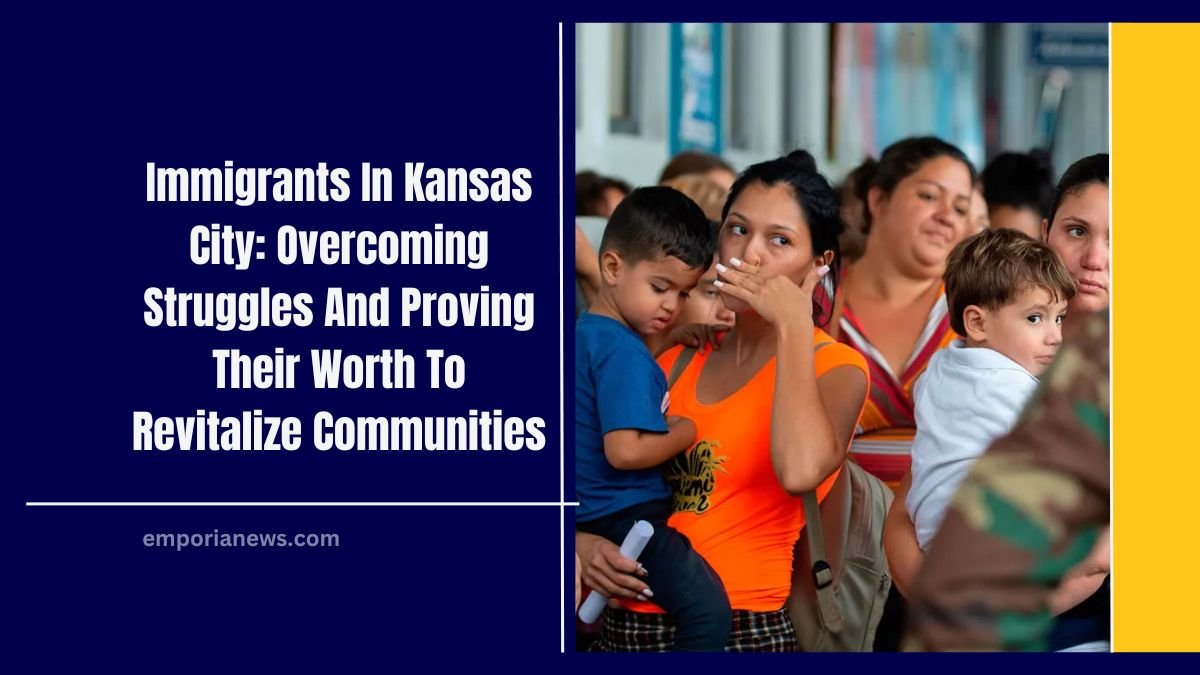Immigrants in Kansas City and across the United States face challenges in gaining acceptance despite their significant contributions to society.
From pursuing safety and opportunities to revitalizing local economies, their stories highlight both struggles and triumphs.
This article delves into the experiences of immigrants in Kansas City and beyond, emphasizing their resilience and the systemic hurdles they encounter.
Why Immigrants Come to the United States
For many, the decision to migrate is driven by a desire for safety, economic stability, and better opportunities for their families.
For instance, Luis and Elisa, a family from Colombia, fled threats of violence in their home country. Their journey to the U.S. was perilous, taking eight months, but they sought a peaceful future for their six children.
Upon arrival, however, the family faced immediate challenges, including poor living conditions in a vacant apartment without utilities.
Despite these difficulties, Luis and Elisa expressed hope that their asylum case would grant them a chance to start anew.
Contributions of Immigrants in Kansas City
Kansas City’s Latino immigrant community has played a pivotal role in revitalizing once-neglected neighborhoods.
Central Avenue in Kansas City, Kansas, is now a bustling hub of businesses and markets, thanks to the entrepreneurial spirit of its Hispanic residents.
Key Contributions of Latino Immigrants:
| Contribution | Impact |
|---|---|
| Business Ownership | Revitalized neighborhoods with thriving businesses |
| Economic Growth | Boosted local economy and created jobs |
| Cultural Enrichment | Added vibrancy with restaurants, markets, and festivals |
| Population Stabilization | Prevented population decline in urban areas |
Despite these achievements, immigrants often feel undervalued. Mayra Romero-Ferman, a longtime resident, emphasized, “We are worthy. We deserve a spot at the table.”
Challenges Facing Immigrants in Kansas City
While immigrants have significantly contributed to Kansas City’s economic and cultural landscape, they face numerous obstacles:
- Stereotypes and Discrimination: Immigrants are often stigmatized, labeled as outsiders, or associated with negative stereotypes.
- Political Underrepresentation: Despite their population growth, immigrants have minimal representation in local government.
- Economic Barriers: Many immigrants encounter difficulties accessing resources to grow their businesses or improve their living conditions.
Luis Gonzalez, who has lived in Kansas City for 19 years, noted, “If we don’t fight, they don’t listen to us. They just pass and don’t see us.”
Second-Generation Immigrants: Shaping the Future
For children of immigrants, the struggle for acceptance can differ from that of their parents. Fatima Sadaf Saied, a second-generation immigrant from Pakistan, described how she ensured her children felt fully integrated into American society by encouraging diverse friendships and participation in public schools.
However, the road to acceptance isn’t always smooth. Sadia Qureshi, another second-generation immigrant, highlighted that visible cultural markers, like skin color or religious attire, often prevent full societal inclusion.
Immigrants in Kansas City and beyond demonstrate resilience and determination despite systemic challenges. They have revitalized communities, boosted local economies, and enriched cultural diversity, all while striving for acceptance and inclusion.
Their stories remind us of the need to value and support immigrant communities, recognizing their contributions to building a better society for all. As Romero-Ferman poignantly stated, “We are worthy. We are not going anywhere.”




